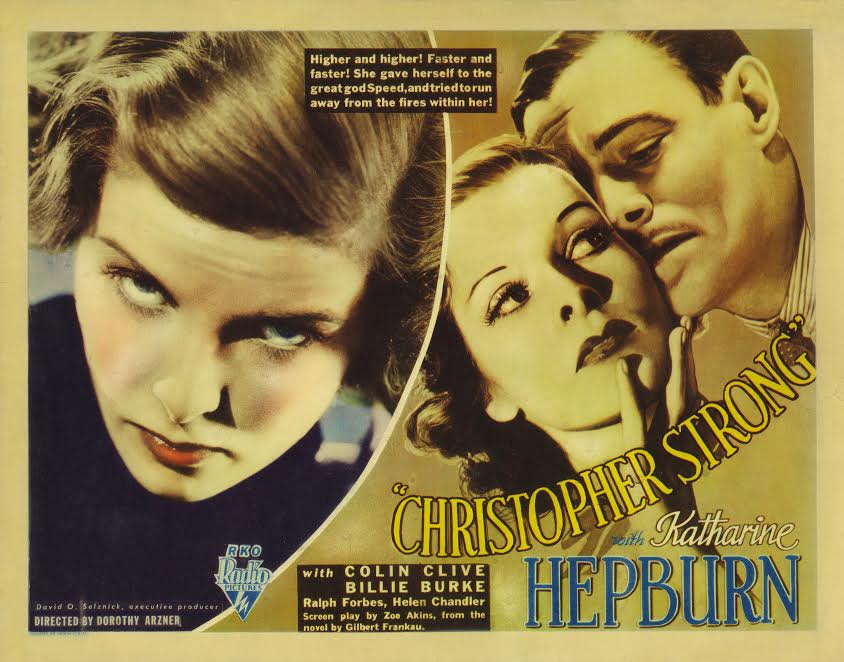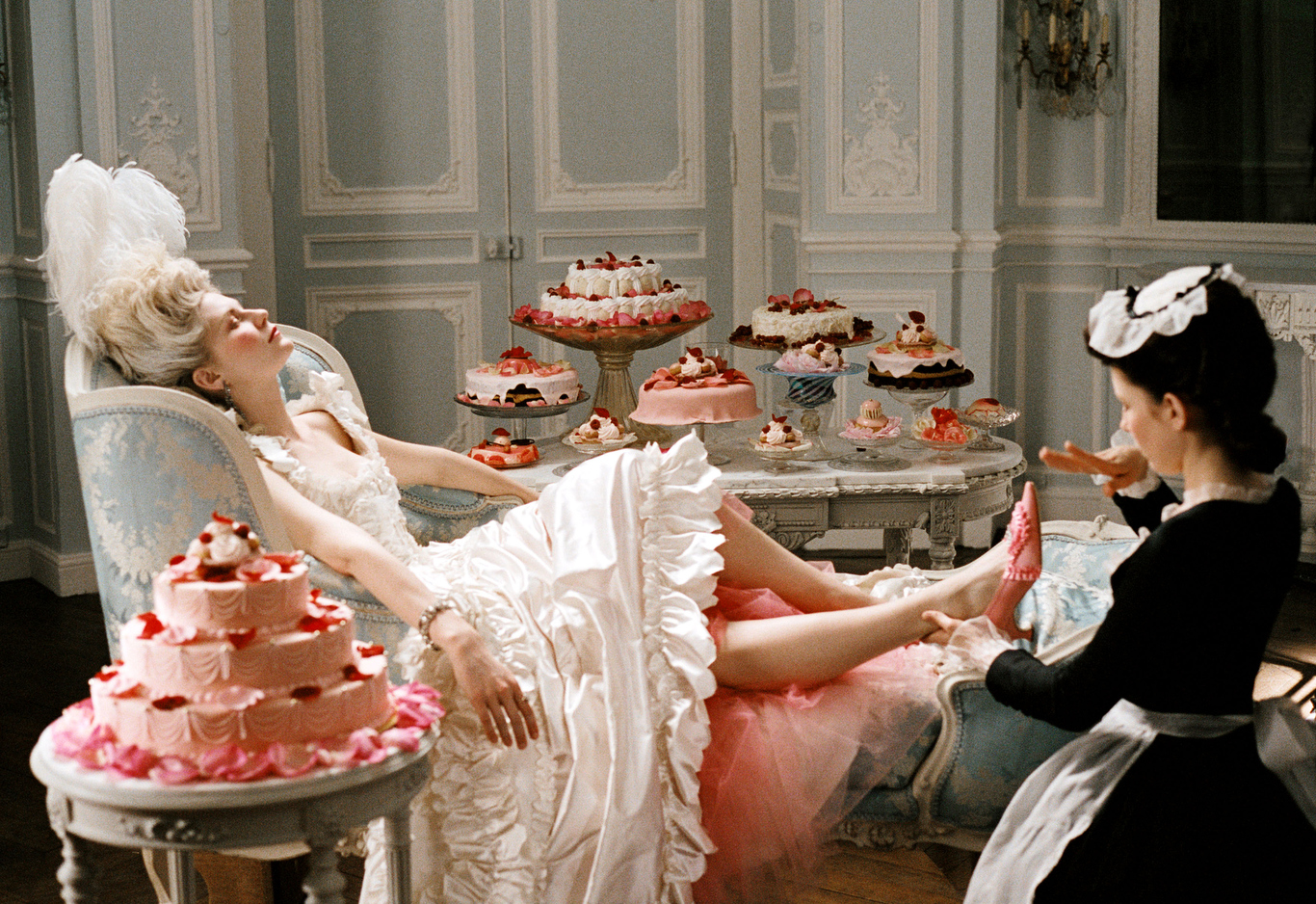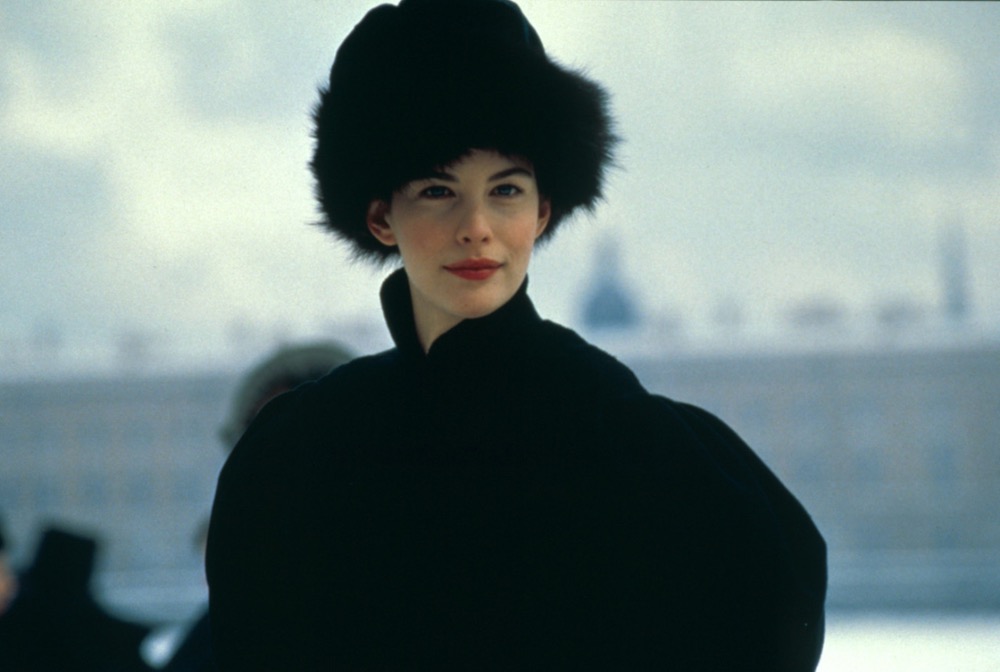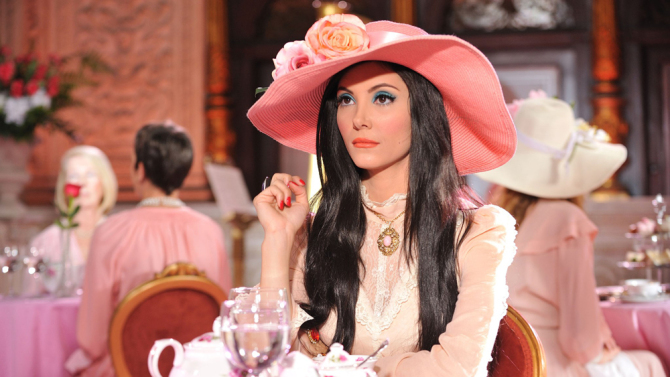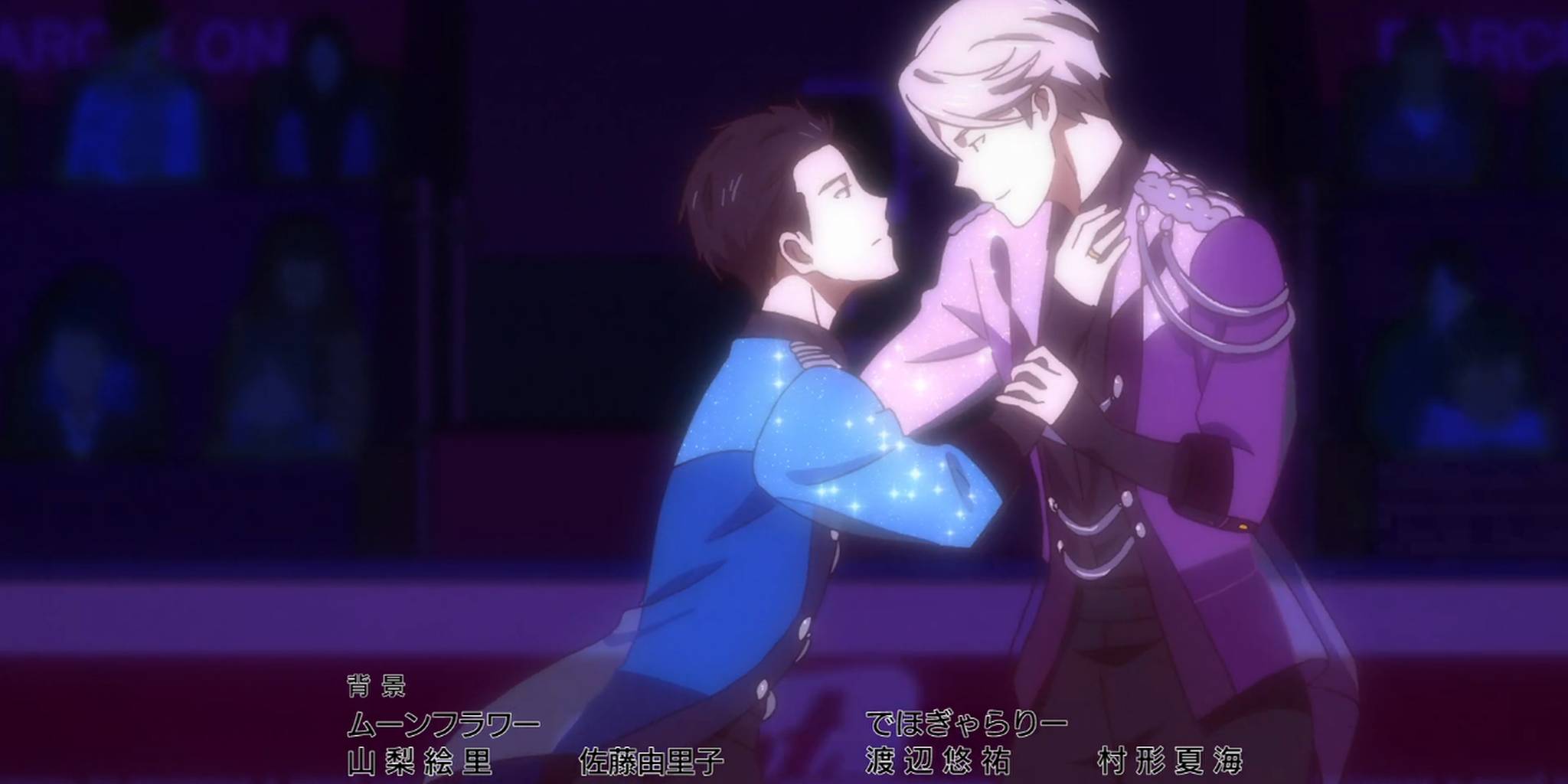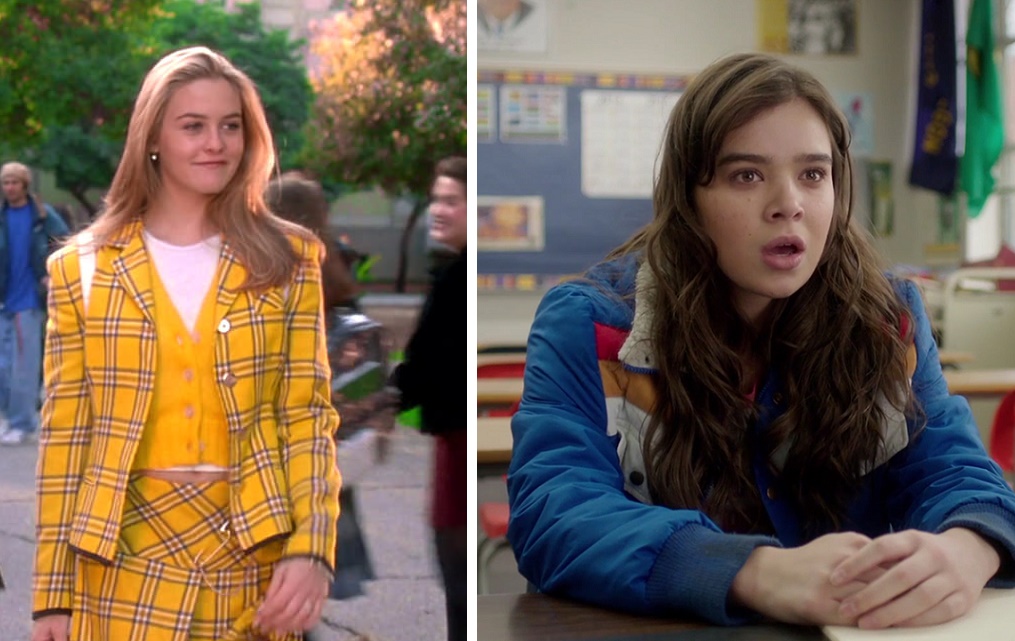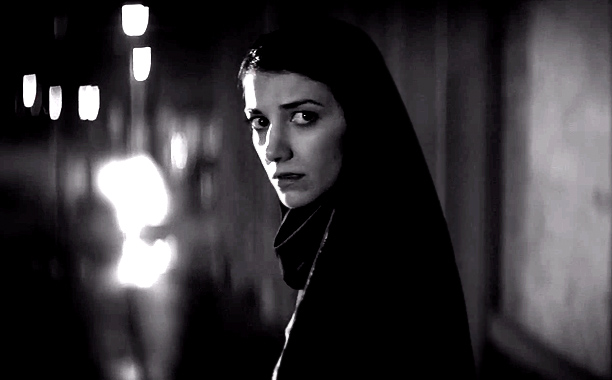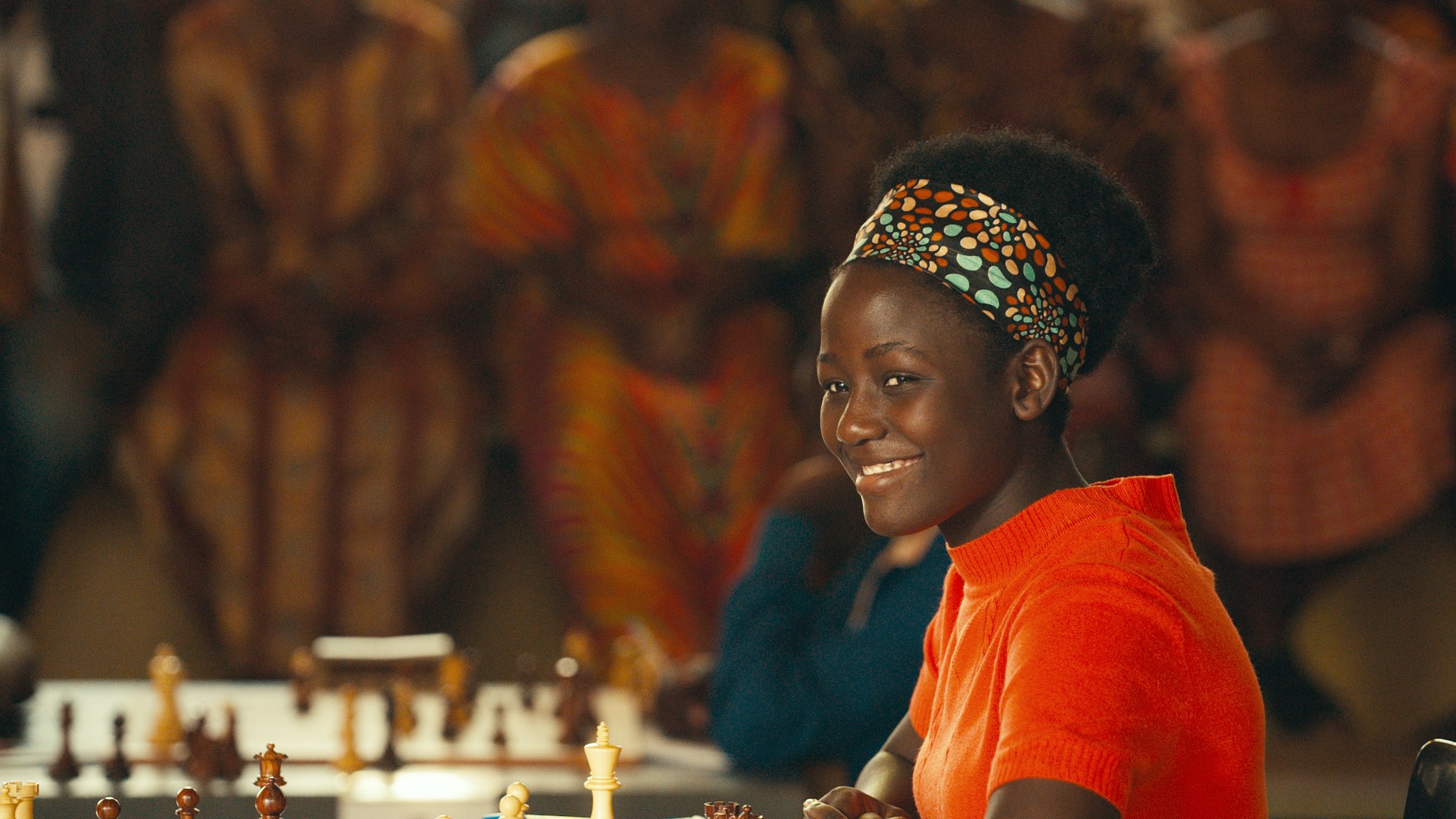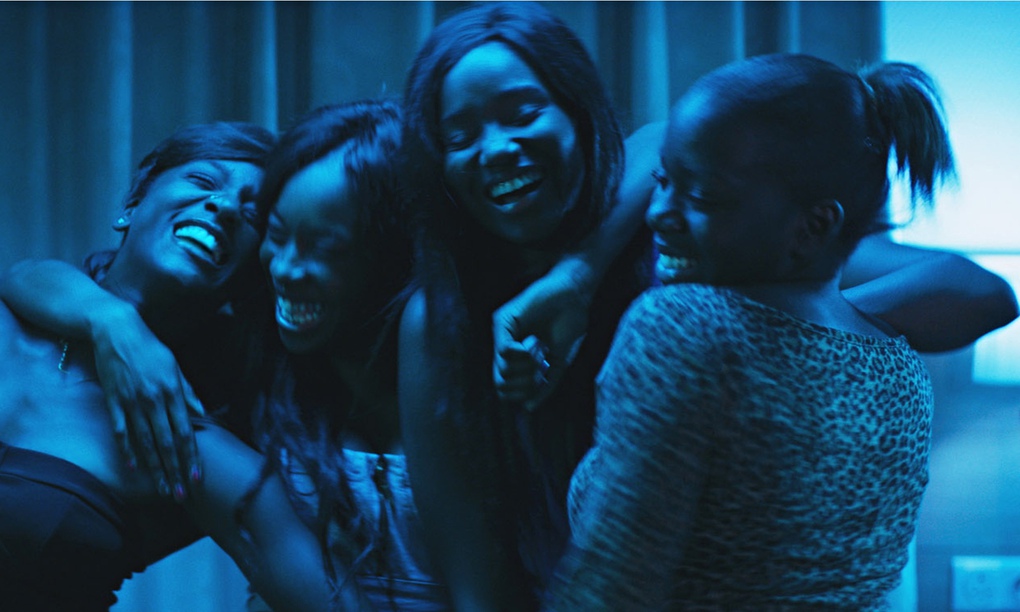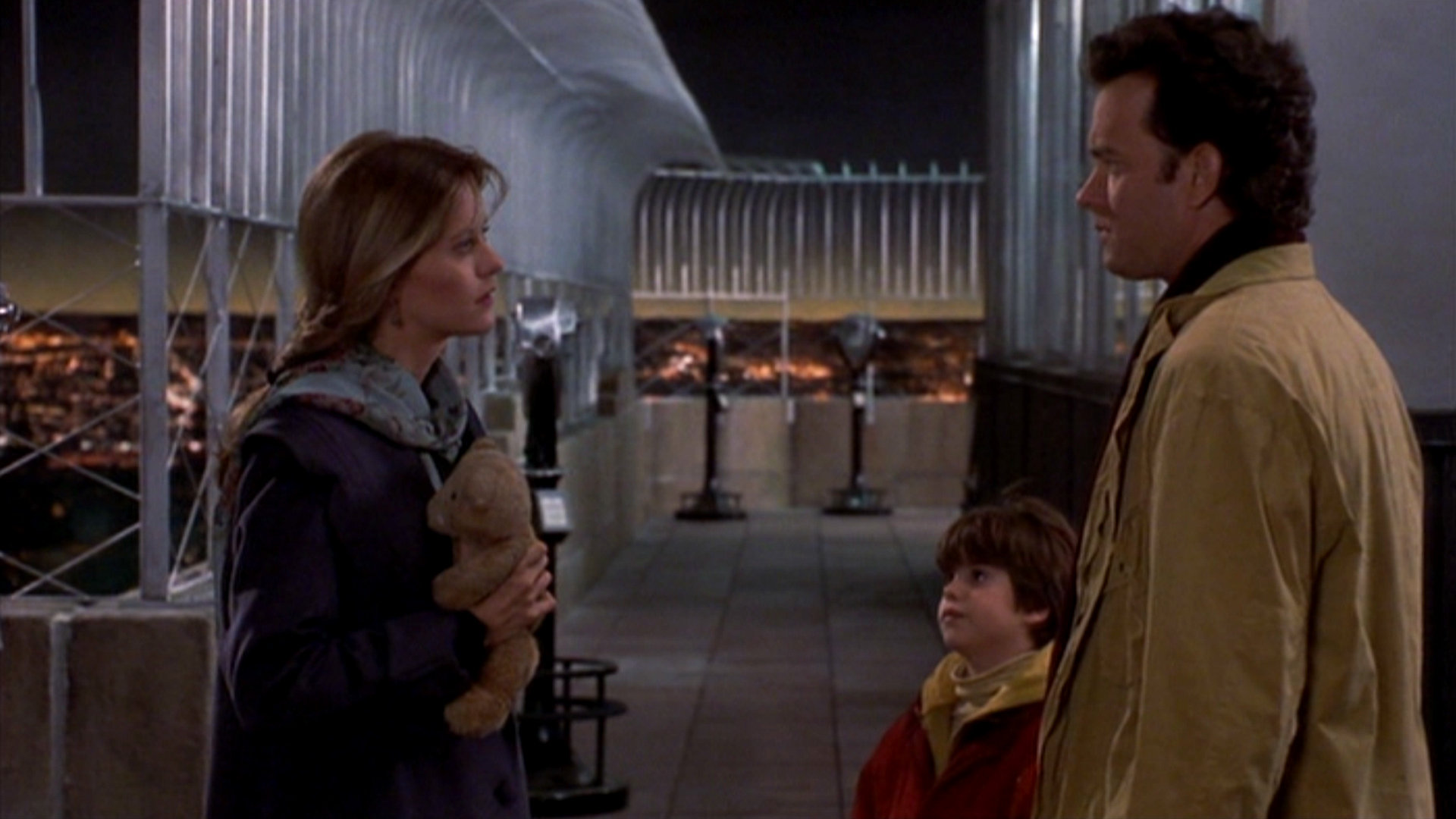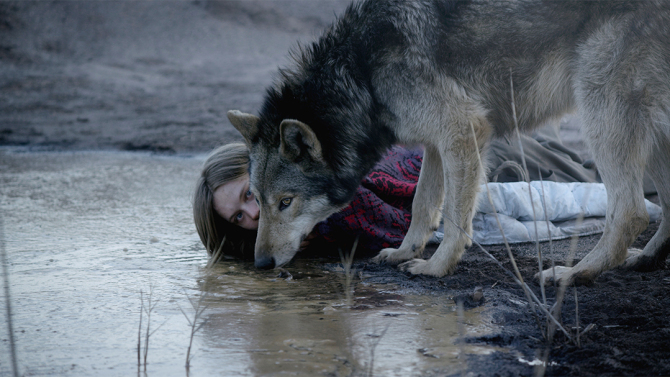This guest post written by Taylor Kenkel appears as part of our theme week on Women Directors. | Spoilers ahead.
When Christopher Strong first hit theaters in 1933, the RKO trailer marketed the 12th film directed by Dorothy Arzner as the tale of “…an alluring young modern who feared her own emotions… a woman of the world, bound by love and shame… a society girl defiant of scandal,” and enticed viewers with a call to “See Katharine Hepburn tackle a man’s job — to escape her emotions!”
The trailer is almost laughable, and it does the heroine a disservice by warping her story into one of salaciousness and disgrace. And far from “run[ning] away from the fires within her,” as other promotional materials suggest, the woman at the center of the film shows a unique, if flawed, sort of courage in her pursuit of independence and love — even as society tells her that she simply cannot have both.
That woman is Cynthia Darrington, played by Katharine Hepburn, in her second screen appearance— and she’s an aviatrix who enjoys independence, lives for adventure, and feels no need for romance until she meets Sir Christopher Strong (Colin Clive), a politician and a well-to-do society man who prides himself on his fidelity to his wife and dedication to his family.
The affair ends badly for Cynthia, and on the surface, the film almost reads just as the trailer spins it. But there’s more at play in this story of a woman who dares to reach for far more than what society will allow her to have; a careful reading of Christopher Strong reveals that — in spite of the film’s unsatisfying end — the criticism it levies is not directed at Cynthia herself, but at the world that simply isn’t ready for a woman of her ambition.
Christopher Strong opens on a scavenger hunt party, where the event’s hostess presents rowdy attendees with a new challenge: a woman must bring back a man who has been married for more than five years and has always been faithful to his wife, and a man must find an attractive woman over 21 who can swear she’s never had a love affair. Harry (Ralph Forbes) and Monica (Helen Chandler) both want to win, but neither of them fit the respective requirements — as Monica is younger than 21 and currently engaged in an affair with Harry, who is married to another woman.
Monica notes with delight that her father, Sir Christopher Strong, has never cheated on her mother. As Monica drives off to fetch him back to the party, Harry finds himself in something of an accidental road race as a woman speeds alongside his motorcycle in her automobile. Both narrowly avoid hitting an oncoming truck. When the woman runs over to see if she can help after Harry is thrown from the motorcycle, he laughs and declares, “Not unless you’re over 21 and can raise your right hand and swear you’ve never had a love affair!” She looks at him with raised eyebrows and quips that she can swear to it, then agrees to accompany him back to the party. Once there, everyone’s delighted to find that the woman is none other than the well-known, record-smashing aviatrix Cynthia Darrington. It is then that Christopher and Cynthia meet, and the whole event unintentionally sets in motion their doomed affair.
Cynthia and Christopher’s relationship stays platonic until an evening several weeks later, when he stops by her home to ask for advice on consoling a heartbroken Monica. Cynthia, on her way to a costume party, emerges from her bedroom to greet him while clad in a silver, form-fitting gown meant to evoke the figure of a moth. In spite of attempts to redirect the discussion, their light flirtations grow serious and they acknowledge their growing attraction to one another.
The affair picks up speed from there — and after an air show in Paris, Cynthia meets the Strong family in Cannes. There’s a sexually charged tango, a confessional boat ride, and an attempt to break off the illicit relationship even as the two admit they love each other. Cynthia abandons Strong in order to enter an around-the-world flying contest, but a stroke of fate brings the two together again shortly after she lands in New York City and wins the race. They spend the night together, and Cynthia decides to give up flying and focus her attention on the affair and on Christopher. She soon grows restless and unsatisfied — but just as she decides to return to the air once more, Cynthia finds out she’s pregnant. After being confronted in very different ways by the now married-and-expecting Monica and by Lady Elaine Strong (Billie Burke), Cynthia decides she doesn’t want to break up the Strong family or tarnish her own reputation with the scandal her pregnancy would cause. She chooses instead to commit suicide by ripping off her oxygen mask while breaking the long-sought-after 33,000 feet altitude record, after which her plane plummets to the earth and explodes as it hits the ground.
The film and its tragedy are very much products of the pre-code era, that brief period of time between the advent of talkies in 1929 and the strict enforcement of the Motion Picture Production Code in 1934. It’s unlikely the film would have received the green light for production even just two years after it was made — given its depictions of “independent” women, infidelity, divorce, and out-of-wedlock pregnancy — even it if does seem to sufficiently “punish” Hepburn’s character for her actions in the end.
In spite of the ending or what the trailer suggests, Christopher Strong doesn’t demonize Cynthia for her ambition and her desires; instead, the film sheds a sympathetic light on her story even as it depicts her pursuit of independence and love as an impossible one within the context of the world she occupies.
The story of such a pursuit and the societal pressures attached likely felt familiar to Dorothy Arzner, writer Zoë Akins, and Katharine Hepburn — each of whom occupied positions of creative control in the film’s production and led successful careers in an industry still notorious for undervaluing women today. Arzner’s film industry career spanned 1919 to 1943, she was openly lesbian, and the only woman at a major studio to make the directorial jump from silent films to the talkies; Akins was a Pulitzer Prize-winning author who wrote everything from plays to poetry to literary criticism; and Hepburn’s image is inextricable from the sort of headstrong characters she played throughout her prolific stage and film career.
That’s not to say the trio’s involvement made Christopher Strong problem-free, or that result isn’t informed and shaped by their respective biases and by the studio system within which they operated. But it is worth noting that, in spite of whatever personal views they might have held, Arzner, Akins, and Hepburn could only continue to find work in Hollywood if their films received studio approval and turned a profit. So much of the subversiveness in this film and others often plays out subtly, in a sort of tug-of-war between the daring and the conventional.
Cynthia Darrington’s initial success and later failure both exemplifies this back-and-forth and mirrors real-world attempts to navigate traditionally male fields while maintaining a sense of power. This is clear from the very beginning, and it’s no accident that the first frames of the film present the title card atop an image of “Boadicea and her Daughters” in the foreground with Big Ben looming behind. On a baser level, it establishes the setting and scene, but, more subtly, it visually and thematically links Cynthia to another woman who sought and gained power in a male-dominated space before meeting a terrible end.
Before she meets that end, Cynthia asserts her independence in the way relatively wealthy, educated, and white women could in the 1930s. She lives alone, enjoys intellectual hobbies, moves effortlessly from jodhpurs and trousers to shimmering costumes and flower-trimmed gowns — and, of course, she pushes both her snazzy roadster and her airplane as fast and far as they’ll go, personifying a sort of recklessness that puts most of the men around her on edge. It’s a recklessness that’s tangled up in her approach to the affair with Strong and to other objects of her desire, and the film reinforces Cynthia’s pursuit of things she can’t have through less-than-subtle visual metaphors: while clad in her moth costume, she is unable to pull her eyes away from the match she struck to light Christopher’s cigarette, and the statue built to commemorate Cynthia after her death is a twin to the figure of Icarus flying too close to the sun.
Women and their desires play a key part in Christopher Strong. Each woman in the film is unique, complicated, and resistant to stereotypes, and their relationships with one another and with the world around them change in unexpected ways. At the beginning of the film, Monica and Elaine exist as opposites: Monica is a “modern” party girl, and Elaine is the self-described “traditionalist” who disapproves of her daughter’s late nights out and of her affair with a married man. When this creates an estrangement between Elaine and her daughter, Monica finds a replacement in her relationship with Cynthia. Their friendship only ends near the end of the film, after Monica finds out about her father’s affair with the pilot she once admired. Now married and pregnant, Monica is more aligned with her mother’s “traditional” values; she sees Cynthia as a threat to familial security, even though her own relationship is the byproduct of an affair not unlike Cynthia’s own.
The deterioration of Monica and Cynthia’s friendship is a near-inversion of the peculiar evolution of the relationship between Elaine and Cynthia. Lady Strong at first views Cynthia with wariness and jealousy, but in the film’s last minutes, she sincerely thanks the woman for her influence on both her husband and her daughter. Elaine speaks in a sort of code indicating that she not only knows about the affair, but that she feels it indirectly caused Christopher to change his attitude about Monica marrying a divorced man — helping the pair avoid “wrecking” their only daughter’s life with disapproval and distance.
While Cynthia and Christopher’s affair indirectly bring the Strong family together, it evolves into a source of tension for Cynthia as she attempts to reconcile her romantic desires with her own sense of independence. And as much as Christopher is drawn to Cynthia for her courage and modernity, he does nearly everything he can along the way to stifle both — and Cynthia spends much of the film resisting his repeated attempts to assert possession and mold their relationship into one that mimics the structure of marriage, usually exemplified in his appeals to her to quit flying. After Christopher begs her to drop out of an around-the-world race, Cynthia fiercely replies, “Oh no, certainly not!” When he asks her to “never take such risks again” during their reunion afterward, Cynthia says, in a line that foreshadows events to come, “I must, and you must let me. Promise you’ll always let me do what I want to do, or we’ll both be terribly unhappy.”
This all changes just minutes later, after their first night together and during one of the film’s more “scandalous” scenes. Cynthia’s arm enters the frame as she reaches to switch on a bedside light, her wrist adorned with a jeweled bracelet Christopher has just given her. “I love my beautiful bracelet, and I’ve never given a button for jewels before,” she says, arm still stretched across the screen, “Now, I’m shackled.” Christopher once again asks her to give up flying, and it’s only after she’s “shackled” in this way that she consents — effectively clipping her own wings in an attempt to fit the structural box of their relationship. She is, at this point, unable to reconcile her feelings and their affair with her sense of independence, and so she decides to commit to the former.
But there’s another piece of jewelry at play in the “shackling” scene: a ring Cynthia wears throughout the film, the meaning of which is diametrically opposed to that of the bracelet. When Christopher takes notice of the ring, Cynthia explains that it’s her family’s crest and motto: “Virtus mortem vincit.” He promptly translates for the viewer: “Courage conquers death”, and Cynthia replies near-instantaneously that while courage conquers death, she does not believe it can conquer love. Curiously enough, “virtus,” the Latin word for “courage” in the motto, also translates to “power.” This seems to indicate that courage and power are inextricable, and combined they conquer death — and that Cynthia believes her “power” can’t conquer love because the two are fundamentally incompatible within the context of their relationship structure.
The “shackling” scene is one of many moments in the film that criticizes marriage or marriage-esque relationships and the gendered assumptions often attached. Such cynicism is a hallmark of Arzner’s work, and it’s apparent throughout Christopher Strong. The film shows us that the treasure hunt rests on a series of harmful assumptions — that convention dictates men always cheat and it’s only the rare one that’s faithful; that women will inevitably desire a “love affair” or marriage even if those institutions offer limited security while stifling their freedom; and those who don’t fit in either box are anomalies to be exhibited. At a party midway through the film, Monica’s aunt (Irene Brown) seems to comment directly on one result of accepting those assumptions when she notes that, “If every wife would only keep her misgivings to herself and her fingers crossed, marriage might sometimes be a success.” In other words: a woman must sacrifice her own agency and independence for a patriarchal conceptualization of marriage, and implicitly love, to “work.”
It’s an idea the film hints at again later on, while Cynthia waits for Christopher in an out-of-the-way restaurant. A man in the lobby recognizes and approaches Cynthia to ask about her flying career, but she tells him she’s given it all up. He laments her decision: “You had the instincts of a pioneer. And you gave all of us courage.” Cynthia dryly replies that she seems to have lost her own courage, in an indication that she equates it to power and to her former independence, and feels her relationship with Christopher required its sacrifice.
Cynthia clearly grapples with the realization that a relationship alone, if defined in those terms, will not fully satisfy her — and, moments after speaking with her admirer in the restaurant, she expresses that dissatisfaction in a powerful monologue:
“I’ve nothing to do all day but wait for you or your telephone calls or your telegrams saying you can’t come,” she tells Christopher, “I only know I want to go up again. I want to break records. I want to train hard and not eat or drink all the time. I want to get up at dawn, I want to smell the field in the morning air, not mind getting oil in my hair and on my hands, and I want to talk to the boys I’ve flown with again.”
But the realization and the attempt to re-claim her independence come too late — as just after her declaration, when she’s at the doctor to receive the all-clear to take to the skies again, she finds out she’s pregnant. When Cynthia later presents the situation to Christopher as a hypothetical one, she’s unsettled by his reply that it would be his duty to marry her if she were pregnant; and while he admits he’s not averse to the idea, he would hate hurting his wife and daughter in the process. When Cynthia says she could manage a life and a child without him, even if doing so would tarnish her reputation, Christopher replies, “Well, I wouldn’t let you.”
The outcomes aren’t ones Cynthia can accept. Abortion is unavailable to her in the context of the film, and a pregnancy out of wedlock would cause a scandal and tarnish her legacy. Even if she did consent to marry Christopher, she doesn’t want to break up the Strong family just when they’ve managed to reconcile — and after the failed attempt to make herself fit the mold of a “traditional” relationship, Cynthia also knows she wouldn’t feel fulfilled by a life defined in those terms. She’s surrounded by undesirable choices, and so she escapes from them the only way she knows how.
Cynthia’s inability to resolve her situation in any way other than permanently removing herself from it reads at first, as the trailer suggests, like an indictment of the character and her actions: she was too recklessly independent in life and in love, and her pursuit of the impossible does not come without consequence. But the last moments of the film aren’t just about Cynthia Darrington, and the spectacle of her death forces the viewer to focus on factors that lead her there. As she pushes her plane higher and higher, the film’s pivotal moments flash in a montage over the altimeter — and we realize the film is not a critique of an ambitious woman herself or of her desires, but of the society that prevents her from obtaining fulfillment and leads her to conclude she has no other option but to tear the oxygen mask from her face and let her plane crash to the ground.
The ending is a far cry from the one that Cynthia deserves, especially since the film suggests her choice is driven by the pressure to prioritize the Strong family’s conventional happiness over her own desires. And while she declares, “Courage can conquer even love,” in her final note to Christopher, the sentiment leaves us with the unsatisfying idea that she has to choose one or the other, and that the expression of her power leads her to such a drastic end.
But as imperfect and disappointing as it is, there is a tragic sort of reasoning behind the self-sacrifice. In Cynthia’s eyes, the decision to end it all while breaking an altitude record everyone thought impossible to break is an not only assertion of power, but one that allows the idea of her courage as an aviatrix to live on after her death.
It’s a faint yet important silver lining, as Cynthia’s ability to inspire the people around her with that courage is clear throughout the film. Monica gushes with admiration the first time she meets Cynthia; the city gives the aviatrix a ticker-tape parade upon her successful flight around the world; a woman asks for Cynthia’s autograph and praises her as a heroine who gave everyone at her school “courage for everything.”
As her plane falls from the sky, we are left with the smallest consolation that Cynthia Darrington will continue to live on as a symbol to others — a beacon of courage and a reminder to keep trying, climbing, flying, even if the sun threatens to burn the feathers from your arms.
See also at Bitch Flicks:
Great Kate: A Woman for All Ages
Quote of the Day: Judith Mayne on Dorothy Arzner
Taylor Kenkel is an ex-copy editor who broke up with the newspaper industry after it found out about her affair with the Oxford comma. She’s now a librarian, and spends too much time thinking about 1930s-1940s film, feminism, comics, queer culture, and too many fandoms to even list. You can find her on Twitter @treegeekay, where she tweets about all of those things (and many more) when she should probably be writing instead.
